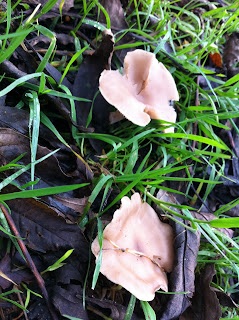Boxing Day has been marked by hunt gatherings up and down the country for generations. It’s a tradition that gave the great and the good a chance to socialise and exercise their horses- all in pursuit of a species that posed a significant threat to the economic interests of a rural nation where those that didn’t own shooting estates tended to eek a living from small farm.
It’s a notion that didn’t really sit particularly well with the majority of people in the UK in the naughties. Most people didn’t feel that a few should have the right to hunt down and kill the wildlife that we are all now entitled to call our own. As a nation we haven’t exactly fallen in love with the fox. They may be a nuisance to suburban dwellers when they rip open the bin bags or crap in the alpine border but they’re no longer a threat to the livelihoods of anyone- wherever you live.
Fox hunting isn’t a particularly efficient way of killing an animal that bothers few- in short those that weren’t upset by the perceived cruelty were indifferent due to the unnecessary nature of something that was very hard to defend. So hunting with dogs was banned in a confusing piece of legislation that left no-one fully satisfied but appeased enough to get a Labour election pledge ticked off the list.
A return for fox hunting?
Despite this fox hunting wasn’t just going to disappear- hunting with dogs may have been banned but there was nothing to stop the same people congregating and chasing across the countryside for the hell of it- and should a fox happen to cross their path, and should it happen to be mauled by the hounds then so be it. It’s an open-ended law that is wide-open to abuse but for how many foxes actually die in this way, cruel as it may be- and whilst I agree it should probably be reviewed, I can’t help feeling that as a nation, when it comes to our environment- we probably have bigger fish to fry.
The other thing to remember is that fox hunting has it’s own supporters- still keen to see it return. Public interest in the issue of fox hunting has waned somewhat since the ban, a change that could mistakenly be perceived as public indifference by those keen to see the ban reversed. Hunt support is often based in the rural land-owning classes- a hot bed of Conservative party support. So for some the present seems like an apt time to re-open the debate.
Fox hunting as agriculture?
As fox hunting is increasingly seen as impractical and unnecessary way to control an animal that bothers few it became increasingly hard to justify its existence and even more difficult to justify it’s return. It seems in response the ban was repackaged and became less about the rights of the privileged and more about the rural economy and the rights of the ordinary rural man on the street (or country lane).
Of course to tag fox hunting onto the raft of wider rural or agricultural ‘issues’ is a bit silly. Fox hunting is fine if you’re into that kind of thing but it’s not a pressing rural issue, the loss of vital rural bus services, the closure of our post offices or the struggles of the UK farming industry are the things we should focus on.
In light of this I believe it’s important that the UK farmers do not allow the lines to become blurred. Farming is about farming- fox hunting is about fox hunting. It’s a not a view shared by Agriculture Minister Jim Paice.
Mr Paice is a supporter of hunting with dogs- that is his opinon. I also understand it is within his ministerial portfolio to address the issue, and I’d rather things were discussed openly rather than hushed-up or hidden away- I just don’t understand why debating fox hunting should be the job of our Agriculture Minister and I wonder why it so high on his list of priorities when it is completely irrelevant to agriculture in the UK.
Agriculture may not employ the number of people it once did, but the amount of the UK’s land area that is farmed remains close to 80%. Agriculture is concerned with the rather vital role of feeding people, it is also has a vital role in conserving our nations biodiversity and protecting the countryside as we know it. Agriculture faces many big challenges and some even larger issues in the future- issues that will involve and affect all of us. So why is it, on Boxing Day, as millions of people lounge in front of their computers and TVs Mr Paice used this as an opportunity to have a moan about the ban on fox hunting.
Being such a controversial topic, on a quiet news day- the subject appeared on the ‘most-read’ lists of various websites, a success for Mr Paice as it drew lots of attention to his cause. But it isn’t my cause.
So perhaps, as Mr Paice draws up his list of New Years Resolutions he could have a think about how his role as Agriculture Minister can be used to benefit UK Agriculture- there are plenty of issues there to keep him busy in 2012.
I might also suggest that perhaps Mr Paice could afford to spend a little less time worrying about why he can’t use dogs to go fox hunting because non of those real issues facing us in 2012 have anything at all to do with the fox.









































